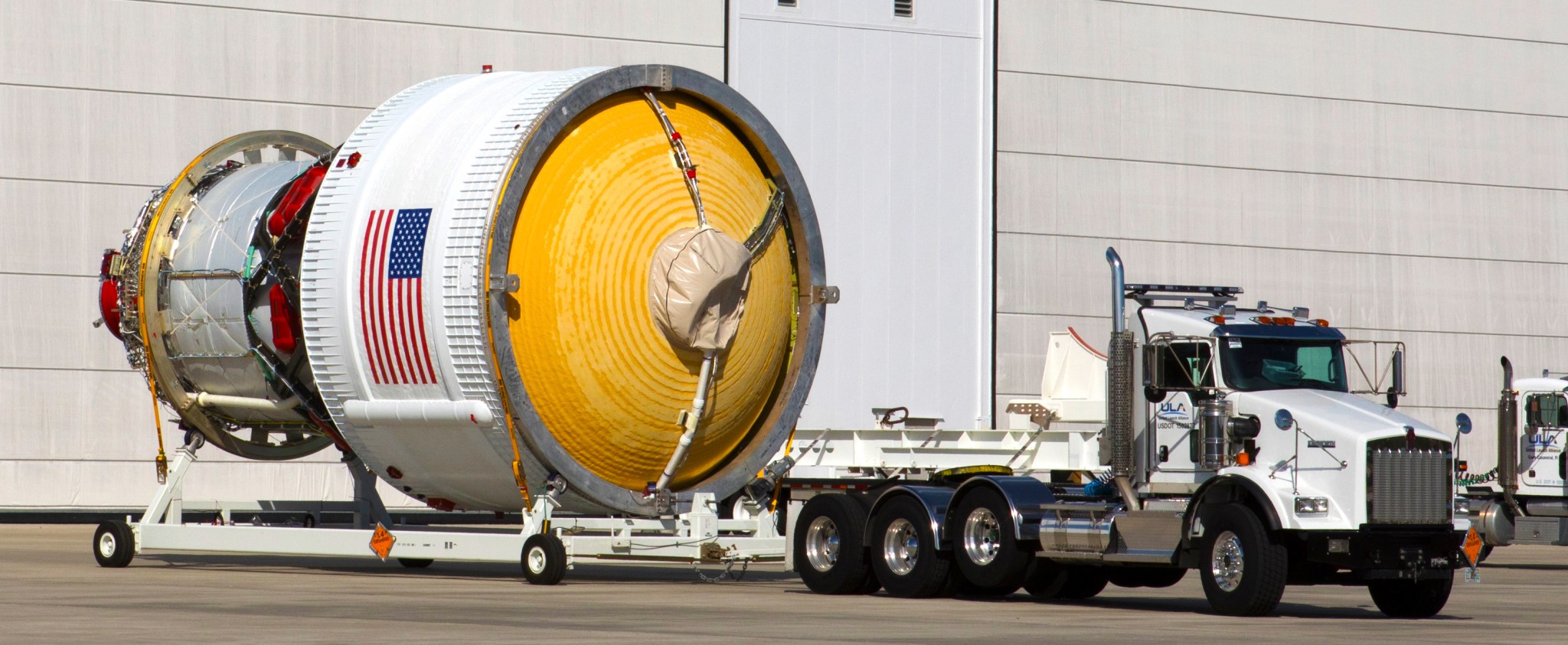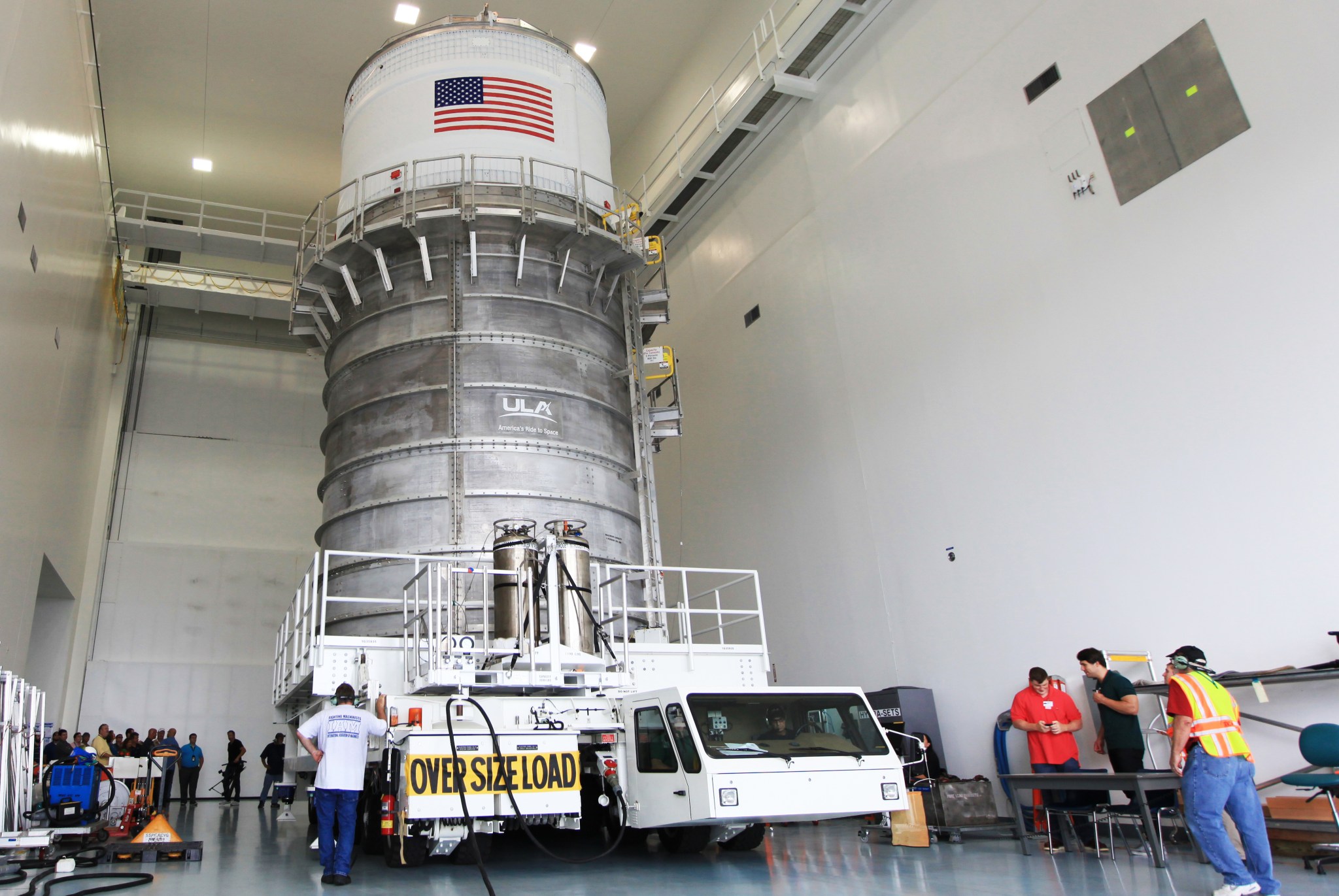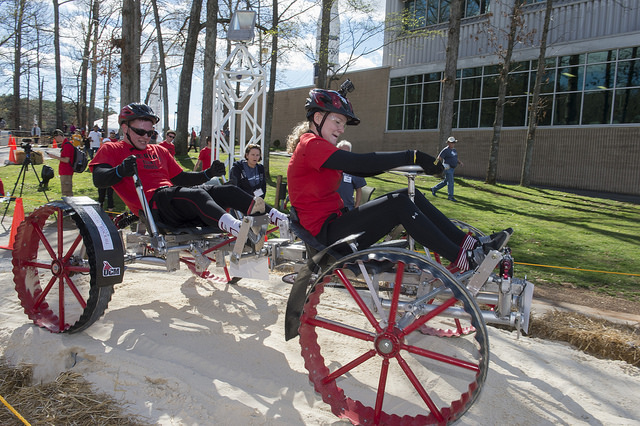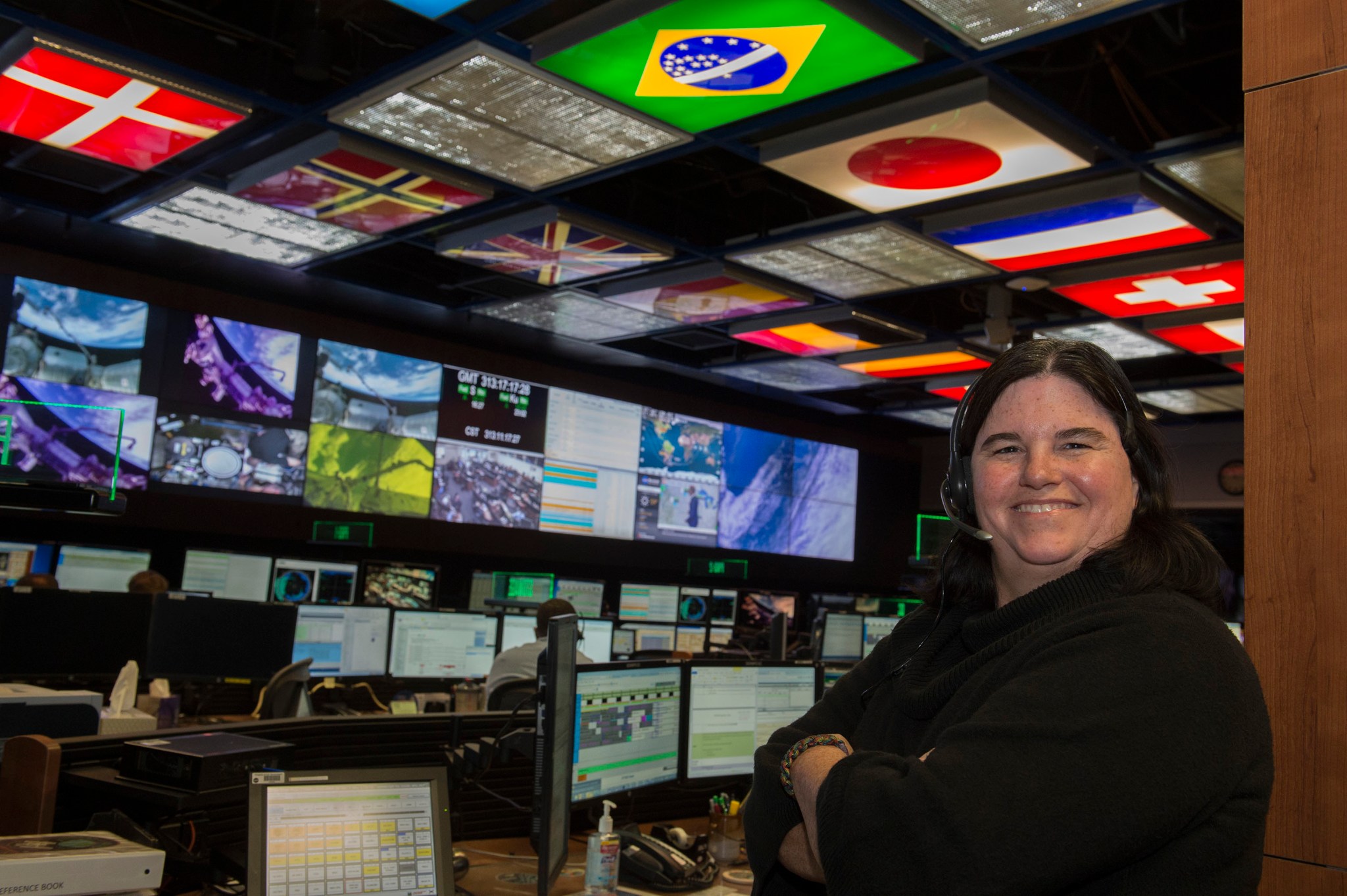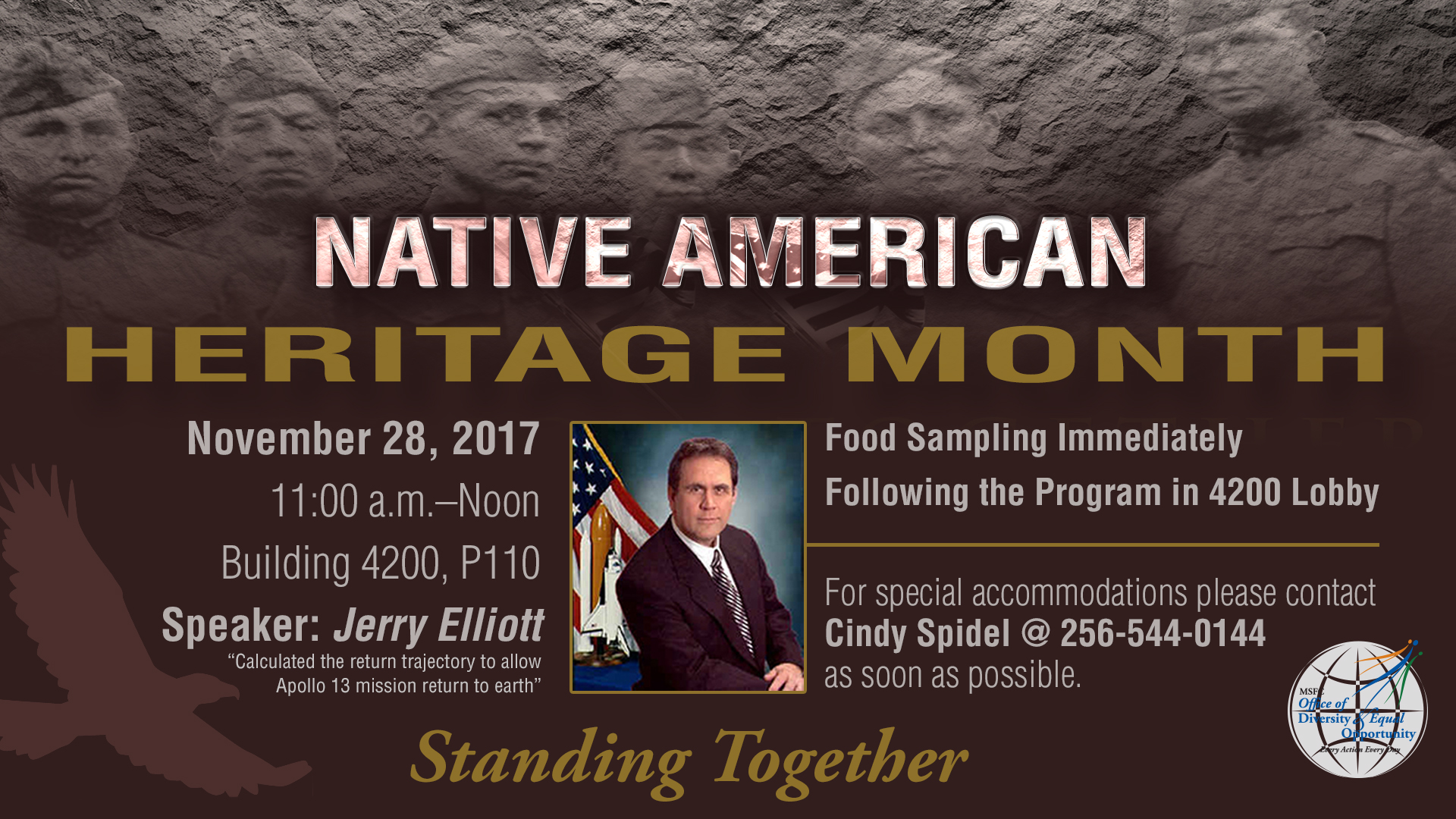In This Week’s Star
- First SLS Rocket Hardware Turned Over to Ground Systems at Kennedy
- New Challenges Await Competitors in NASA’s 25th Annual Human Exploration Rover Challenge
- Apollo 17 Astronaut and Geologist Harrison Schmitt to Speak at Shared Experiences Forum Dec. 7
- Penny Pettigrew, Space Station Payload Communications Manager at Marshall, Reflects on Choctaw Heritage, Future of Space Exploration
- Marshall Team Invited to Celebrate Native American Heritage Month Nov. 28
- Marshall Astronomers, Scientists Share Details of Extraordinary Astronomical Event
- Marshall Tech Talk Hosts Huntsville’s Destin Sandlin
- This Week in NASA History: U.S. Microgravity Payload-4 Launches – Nov. 19, 1997
- Obituaries
First SLS Rocket Hardware Turned Over to Ground Systems at Kennedy
NASA has reached another key milestone in preparation for human deep-space exploration near the Moon. Officials with the Space Launch System Spacecraft/Payload Integration and Evolution organization formally turned over processing of the rocket’s interim cryogenic propulsion stage to the Ground Systems Development and Operations Program at NASA’s Kennedy Space Center.
The SLS is a new heavy-lift rocket designed to send astronauts aboard the Orion spacecraft beyond low-Earth orbit to the vicinity of the Moon, and ultimately Mars.
At a recent ceremony in the high bay of the spaceport’s Space Station Processing Facility, Mike Bolger, manager of the GSDO Program at Kennedy, noted that the ICPS is the first piece of hardware being turned over to GSDO for processing in preparation for the first integrated flight of SLS and Orion, an uncrewed mission known as Exploration Mission-1.
“It’s great to be standing in front of flight hardware,” he said. “Over the next year, the components of the most powerful rocket in the world will be delivered to Kennedy.”
John Honeycutt, SLS program manager at NASA’s Marshall Space Flight Center, thanked the Kennedy team for years of effort preparing the Florida spaceport’s facilities for the task.
“I’ve seen all your hard work that you’re doing relative to the accomplishments you’ve made in the Vehicle Assembly Building, on the mobile launcher and out at the launch pad,” Honeycutt said. “We’re looking forward to getting you some more pieces of hardware to start moving over to the VAB so you can put the rocket together.”
The ICPS arrived at Port Canaveral, Florida, aboard the United Launch Alliance’s Mariner barge earlier this year, and is the first integrated piece of flight hardware completed for NASA’s SLS rocket. It was shipped from the ULA facility in Decatur, Alabama.
After arrival, it was transported to the ULA Horizontal Integration Facility near Space Launch Complex 37 at Cape Canaveral Air Force Station. There, it was removed from its shipping container for initial inspections. Next, the ICPS was moved to the Delta Operations Center for further checkouts. It then was packed inside a canister and transferred to the Space Station Processing Facility.
The ICPS now will be processed and prepared for EM-1. NASA is managing to December 2019, with four to six months schedule risk for launch. With the Orion attached, the ICPS sits atop the SLS rocket and uses liquid hydrogen and liquid oxygen propellants to give the capsule the additional thrust needed to travel tens of thousands of miles beyond the Moon.
“Our human spaceflight mission at NASA is to push humans deeper out into the solar system,” said Bill Hill, deputy associate administrator for Exploration Systems Development at NASA Headquarters. “We are going to take the Orion spacecraft, with the help of ICPS, farther into the solar system than any spacecraft built for humans has ever gone.”
New Challenges Await Competitors in NASA’s 25th Annual Human Exploration Rover Challenge
By William Bryan
Six minutes of air, 14 obstacles and five mission tasks lay ahead of the intrepid explorers. Decisions on which obstacles and tasks to complete and which to bypass must be made by them and their teammates, knowing that at the end of six minutes, only a one-minute reserve of oxygen is left to get them to their home base. If they do not return home before the end of the seventh minute, all will be lost.
The mission is not for the faint-hearted, nor will it be taking place on another world or with actual oxygen limitations. Instead, it is the newly designed NASA Human Exploration Rover Challenge competition to be held at Huntsville’s U.S. Space & Rocket Center in April 2018.
The annual competition challenges high school and college students from around the United States and the globe to design, build, test and compete on human-powered rovers across a bruising 3/4-mile course.
Once focused primarily on finishing the course in the fastest time, the new format sets teams up to think more like mission planners and explorers during the competition than ever before.
“What was once a race is now an excursion with realistic exploration elements,” said Frank Six, university affairs officer at NASA’s Marshall Space Flight Center and founder of the competition. “Those rover teams with the best technologies and best strategies of attempting tasks and obstacles will be the winners.”
Participating teams will have a map and description of the obstacles and tasks, allowing them to plan in advance which to attempt or bypass. Teams will be given points based on how well they perform the attempted tasks and navigate obstacles. If a bypass is used, no points will be awarded for the bypassed task or obstacle. While no longer a race, if a team fails to return to the finish line before the allotted time expires — when their virtual oxygen has been consumed — all points gained on the course are forfeited. Each team will be granted two attempts at the course and their highest score will count.
The tasks in this year’s competition are:
1. Solid Soil Sample Retrieval – Collect, bag and store solid surface samples
2. Spectrographic Analysis – Take photographs with a camera using different filters
3. Instrument Deployment – Deploy a solar-powered cell for a scientific instrument
4. Flag Plant and Photo – Successfully plant a flag and take a photograph
5. Liquid Sample Retrieval – Collect, bag and store three separate liquid samples
Information about the 14 obstacles can be found on the challenge’s website.
Onboard displays — in the form of the drivers’ cell phones or written checklists — are allowed for the excursions. Drivers — also known as rovernauts — may communicate with their teams during their excursions using radios for strategy and updates.
In addition to communication, strategy and completing tasks and obstacles, teams must also be diligent and deliberate in developing their rovers. As in past years, wheels — with the exception of the central hub — must be developed by the teams and not purchased commercially off the shelf.
Creation of innovative drivetrains — the system that transfers the drivers’ input energy to the wheels — provides teams an opportunity to win a separate award. Traditional drivetrains of chains and sprockets are unlikely to be used on planetary surfaces due to their susceptibility to damage from the foreign environments. Newly designed drivetrains in the 2017 competition included a ratchet system and a belt drive system.
As in past years, the rover — in its stowed configuration — must fit into a cube measuring 5 feet on each side, and points will be awarded based on the time required to unstow and configure the rover for use.
As NASA and the space industry continue to innovate and set their eyes on exploring the many planetary bodies of the solar system — including the Moon and Mars — it is vital that the next generation of engineers, scientists, explorers and team members are encouraged and mentored to do the same. Entering its 25th competition, the Human Exploration Rover Challenge continues to be a flagship competition and education opportunity for NASA.
Registration for the competition is open until Dec. 15 for international teams and Jan. 19 for U.S. teams. To register or to learn more, click here.
Bryan, an ASRC Federal/Analytical Services employee, supports the Office of Strategic Analysis & Communications.
Apollo 17 Astronaut and Geologist Harrison Schmitt to Speak at Shared Experiences Forum Dec. 7
Apollo 17 lunar module pilot and geologist Harrison “Jack” Schmitt will speak at NASA Marshall Space Flight Center’s Shared Experiences Forum on Dec. 7. The event will be held at 11 a.m. in Morris Auditorium.
The Shared Experiences Forum Series — part of Marshall’s Mission Success is in Our Hands initiative — is sponsored by Marshall’s Safety & Mission Assurance Directorate in partnership with Jacobs Engineering Group of Dallas. The initiative seeks to help team members make meaningful connections between their jobs and the safety and success of NASA missions.
Schmitt was selected as a scientist-astronaut in 1965 and played a vital role in training his fellow astronauts in field geology during the Apollo program. In 1972, riding atop a Saturn V rocket developed at Marshall, Schmitt — along with Apollo 17 commander Gene Cernan and command module pilot Ron Evans — left Earth and headed to the Moon. During his 22 hours of lunar extravehicular activity, Schmitt became the first and only geologist to walk and conduct scientific investigations on the Moon.
Following his NASA career, Schmitt served as a U.S. senator, representing his home state of New Mexico. He remains involved in lunar geology research and is a tireless advocate for the exploration and utilization of the Moon, both to advance science and the economy and to use it as a test site for deep-space exploration.
Penny Pettigrew, Space Station Payload Communications Manager at Marshall, Reflects on Choctaw Heritage, Future of Space Exploration
By Rick Smith
As a NASA payload communications manager, Penny J. Pettigrew spends most days in the Payload Operations Integration Center at NASA’s Marshall Space Flight Center communicating with coworkers some 250 miles overhead — the astronauts conducting scientific research aboard the International Space Station.
But whenever she can, Pettigrew makes time to talk with a very different audience. She visits classrooms across the country and via Skype, sharing her story with young people — including those of Native American heritage, like Pettigrew herself.
“It’s so frustrating to meet a young person who thinks certain goals are forever out of their reach because of where they live,” she said. “As a person of Native American descent who didn’t have a lot of advantages growing up, I want to show them that hard work and self-determination can make anything possible.”
The daughter of a U.S. Navy sailor, Pettigrew was born in Honolulu, Hawaii. Her family moved frequently from one duty station to the next. They eventually settled in San Diego, California, the city she still considers home, but prior to that she often felt cast adrift by the military lifestyle. Her mother strove to inspire Pettigrew and her sister with stories of their Choctaw heritage, including that of a maternal ancestor who in the mid-1800s endured the Trail of Tears — the forced removal of Native Americans from their homes in the southeastern United States to reservations west of the Mississippi River.
Then in 1989, Pettigrew, a space program enthusiast from an early age, attended Space Camp at the U.S. Space & Rocket Center in Huntsville, an experience which opened her eyes to all the opportunities in the “Rocket City,” she said. Determined to honor the perseverance of her ancestors and family, she began pursuing her childhood dream in earnest when she received a four-year, Native-American scholarship to the Colorado School of Mines in Golden, where she earned her undergraduate degree in chemistry in 1992. In 1996, she received her master’s degree in chemistry, with a specialty in materials science, from the University of Alabama in Huntsville. After achieving her master’s degree, she received a NASA research scholarship to spend the next three years conducting applied materials science research at Marshall.
Beginning in 2000, she went to work for a series of aerospace firms in Huntsville, all supporting NASA and Marshall. Her initial task was to assist in the design and development of the Materials Science Research Rack, a specialized International Space Station experiment container, the use of which she now oversees regularly as a payload communications manager, or PAYCOM.
Pettigrew joined NASA full time in 2008 and found her true calling three years later when she joined “the cadre” — the flight controllers who monitor research on the space station around the clock, seven days a week, 365 days per year. They stay in direct contact with station crew, with Mission Control at NASA’s Johnson Space Center and international control centers in Germany and Japan, and with scientists around the world whose experiments are underway on the orbiting science facility. NASA maintains a live UStream feed where public audiences can tune in and observe this interconnected team effort as it happens.
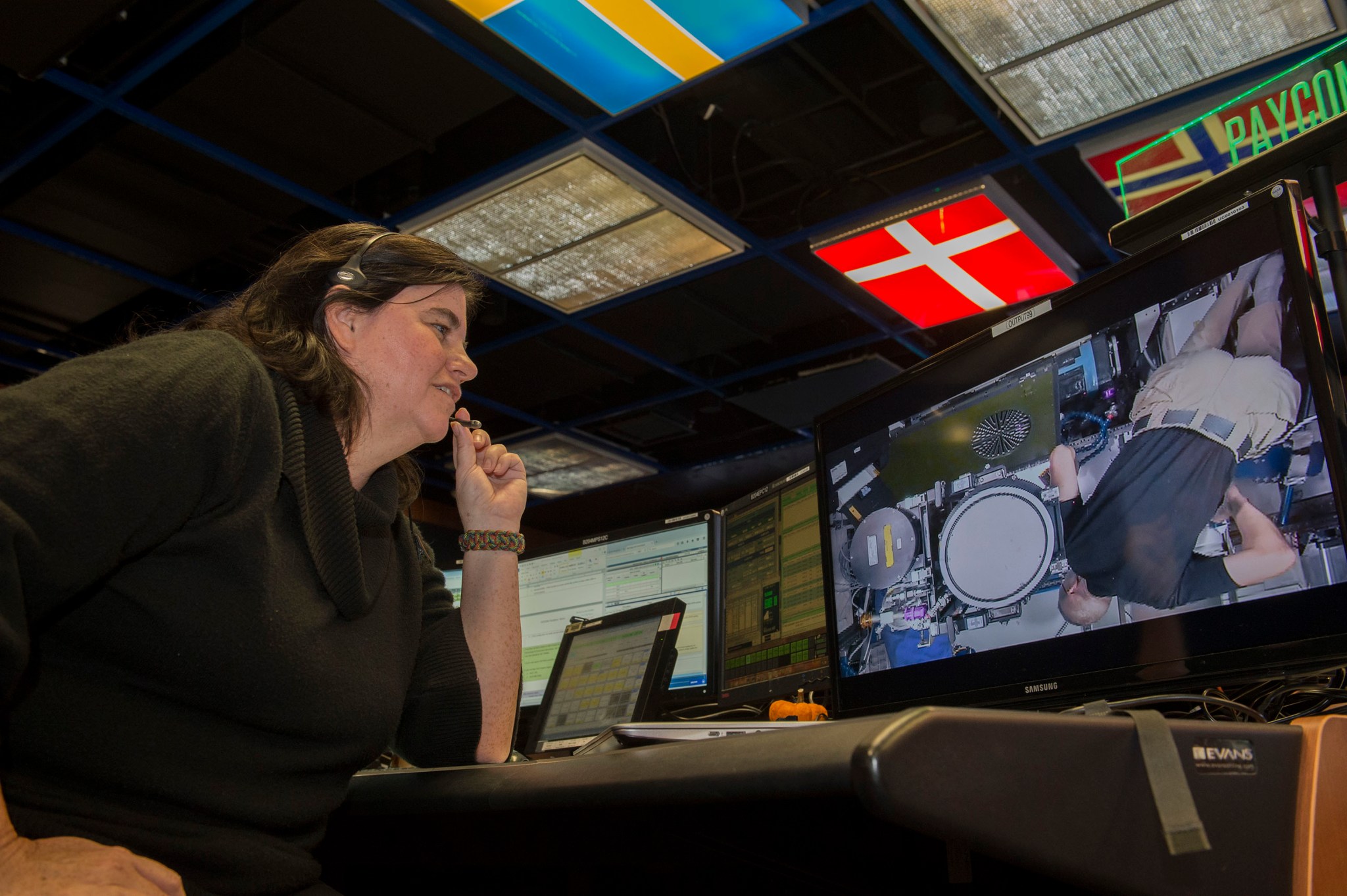
“It’s the cadre’s job to answer crew questions about operations they’re performing, to monitor the health and status of station hardware and to provide a second set of eyes,” Pettigrew said. “The crew has more than a hundred experiments operating at any given time, so we help ensure everything goes smoothly.” Periodically, the team members travel to Houston to facilitate training with the astronauts, gaining hands-on experience with the more complex experiments they’ll be overseeing.
Pettigrew praised the station crew, whose busy schedule leaves little downtime and even less margin for error. “I’m so proud to work with our astronauts,” she said. “Their dedication and enthusiasm is inspiring, and it’s an honor to help them pursue NASA’s goals of better understanding the impact of long space missions on human explorers and preparing ourselves for new journeys of discovery.”
When she’s not hard at work, Pettigrew spends most of her free time with her daughter, Aspen, coaching her softball team, volunteering at her school and traveling to Disney World and other destinations. They even attended parent-child Space Camp together. Pettigrew remains a staunch advocate for that inspiring opportunity, and was among the inaugural honorees inducted into the Space Camp Hall of Fame in 2007.
She also strives to pass on her deep respect for their heritage. Today the Choctaw Nation, which has more than 200,000 enrolled members, primarily resides in Oklahoma, Louisiana and Mississippi. Pettigrew and Aspen visit those tribal homes and attend events.
“We stay involved and participate however we can,” she said. “To Aspen, my job — talking to astronauts in space, helping conduct experiments on the space station — is normal. It’s just part of everyday life. It’s my goal now to help other young people, especially young Native Americans, realize that similar careers can be attained by anyone. They just have to follow their passion.”
Smith, an ASRC Federal/Analytical Services employee, supports the Office of Strategic Analysis & Communications.
Marshall Team Invited to Celebrate Native American Heritage Month Nov. 28
NASA Marshall Space Flight Center team members are invited to a Native American Heritage Month celebration from 11 a.m. until noon, Nov. 28 in Building 4200, Room P110. The keynote speaker will be Jerry Elliott, a former NASA physicist and one of the first Native Americans hired at NASA’s Johnson Space Center.
Elliott is known for his role in the historic Apollo 13 mission. In 1970, he was serving as the retrofire officer at the NASA Mission Control Center when the now-infamous radio transmission crackled through space and announced that the Apollo 13 crew was experiencing an emergency situation. Elliott was awarded the Presidential Medal of Freedom, the highest civilian accolade, for his calculations of a return trajectory to allow the struggling capsule back into Earth’s atmosphere.
Also known as J.C. High Eagle, Elliott is of Osage and Cherokee heritage and plays traditional American Indian flute in addition to popular country music.
Native American Heritage Month, presented by Marshall’s Office of Diversity and Equal Opportunity, will recognize the culture and contributions of Native Americans through storytelling and a food sampling immediately following the program.
Marshall Astronomers, Scientists Share Details of Extraordinary Astronomical Event
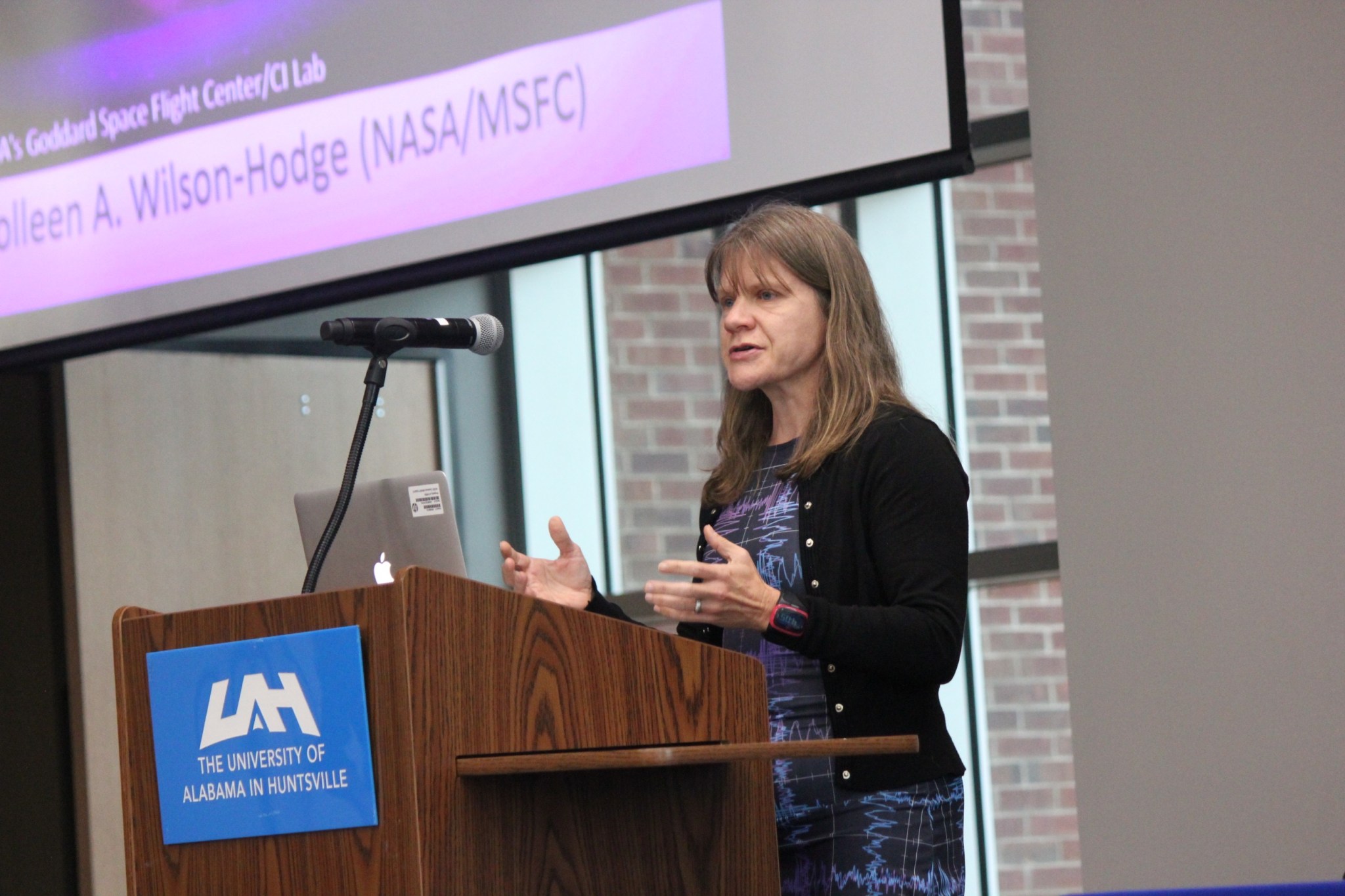
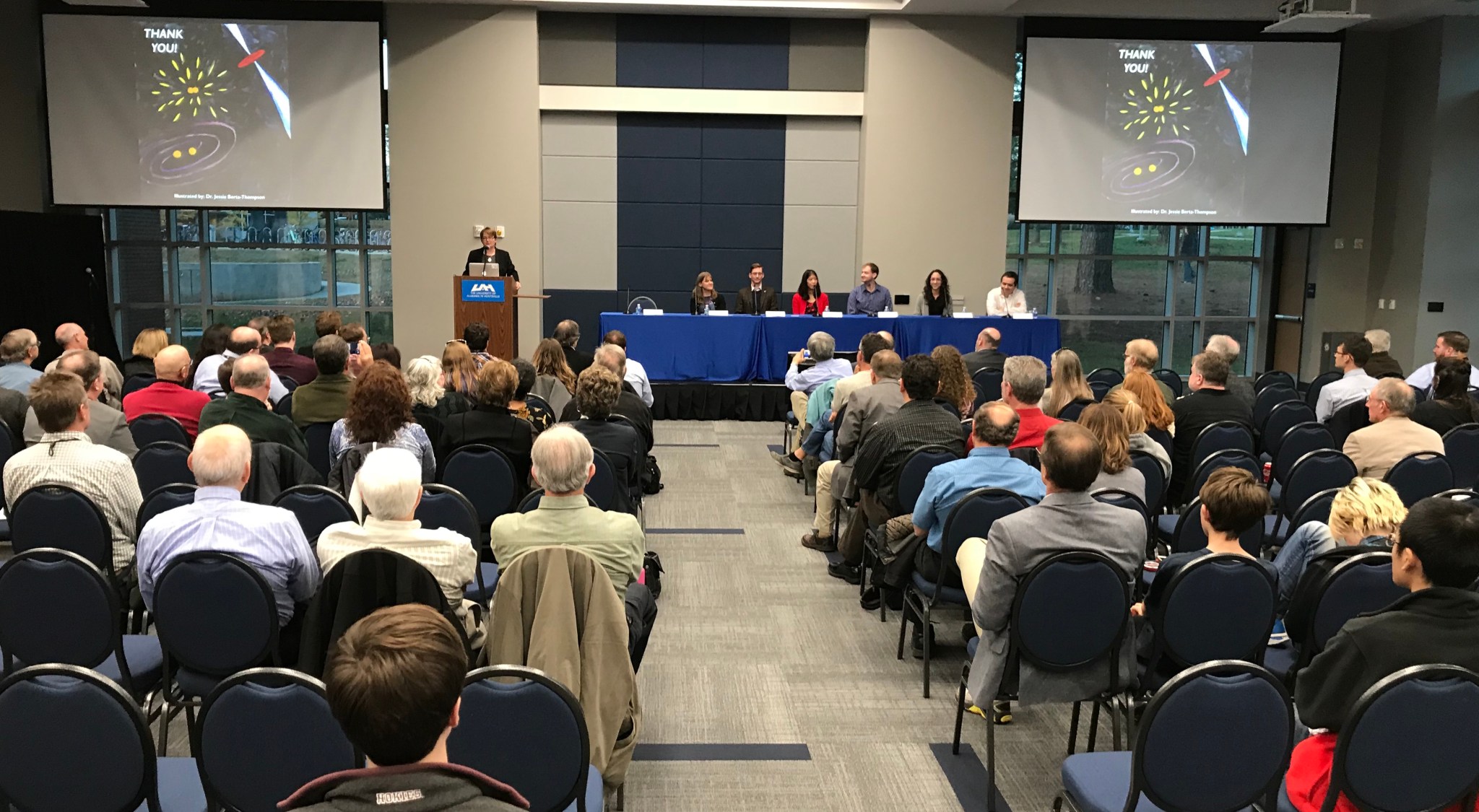
Marshall Tech Talk Hosts Huntsville’s Destin Sandlin
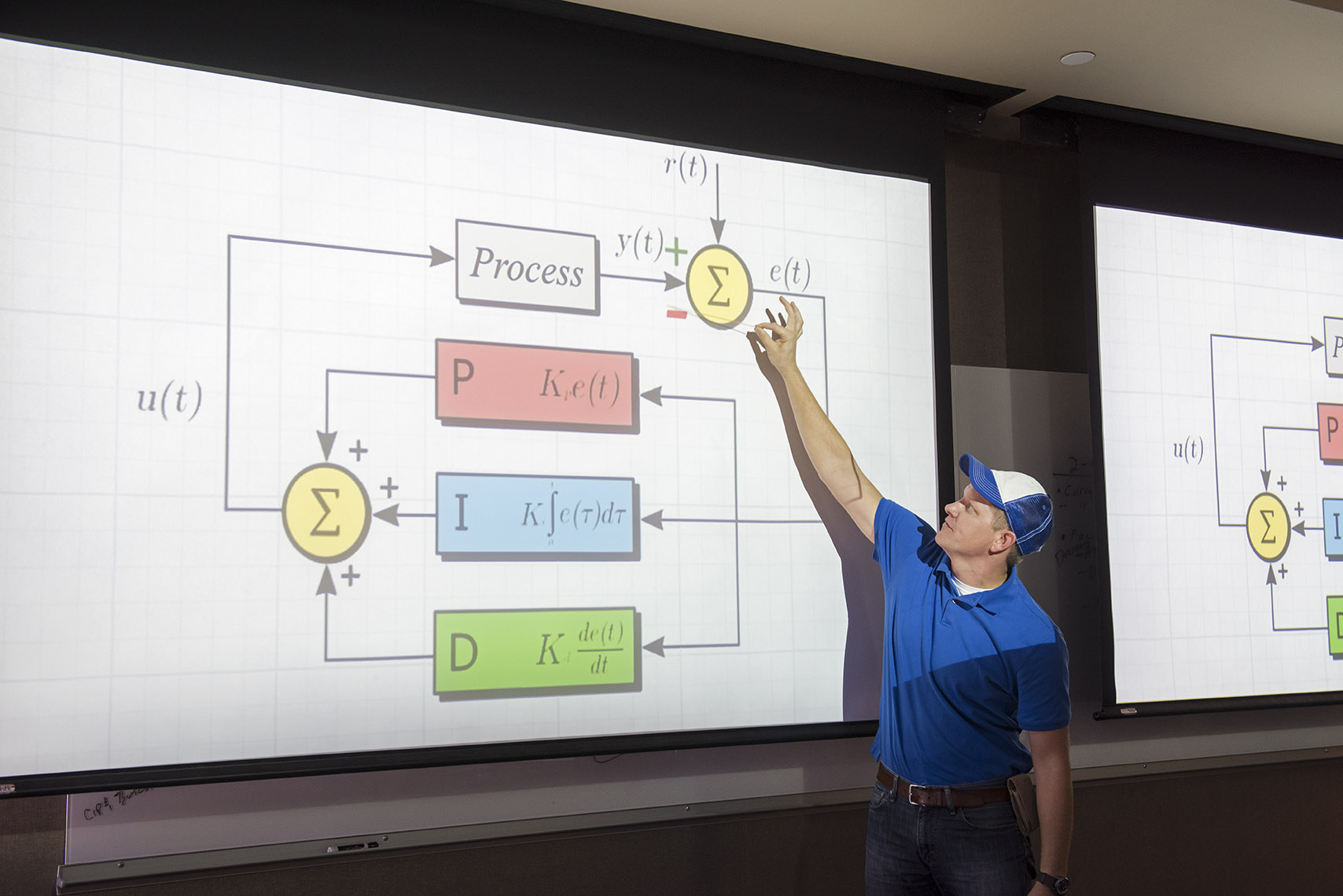
Marshall Tech Talk, a monthly series showcasing innovative topics of interest to the Marshall community, hosted Destin Sandlin Nov. 9. The Huntsville native challenged Marshall team members to think outside of the box with some of his concepts at the November talk. Sandlin, a full-time aviation flight test engineer at the Redstone Test Center on Redstone Arsenal, launched his own YouTube channel in 2007 called “Smarter Every Day.” Sandlin’s channel boasts more than 5 million subscribers and releases two videos each month using science to explore operations behind what some might view as simple tasks. If you want to join Sandlin in his quest to become smarter every day, follow his YouTube channel.
This Week in NASA History: U.S. Microgravity Payload-4 Launches – Nov. 19, 1997
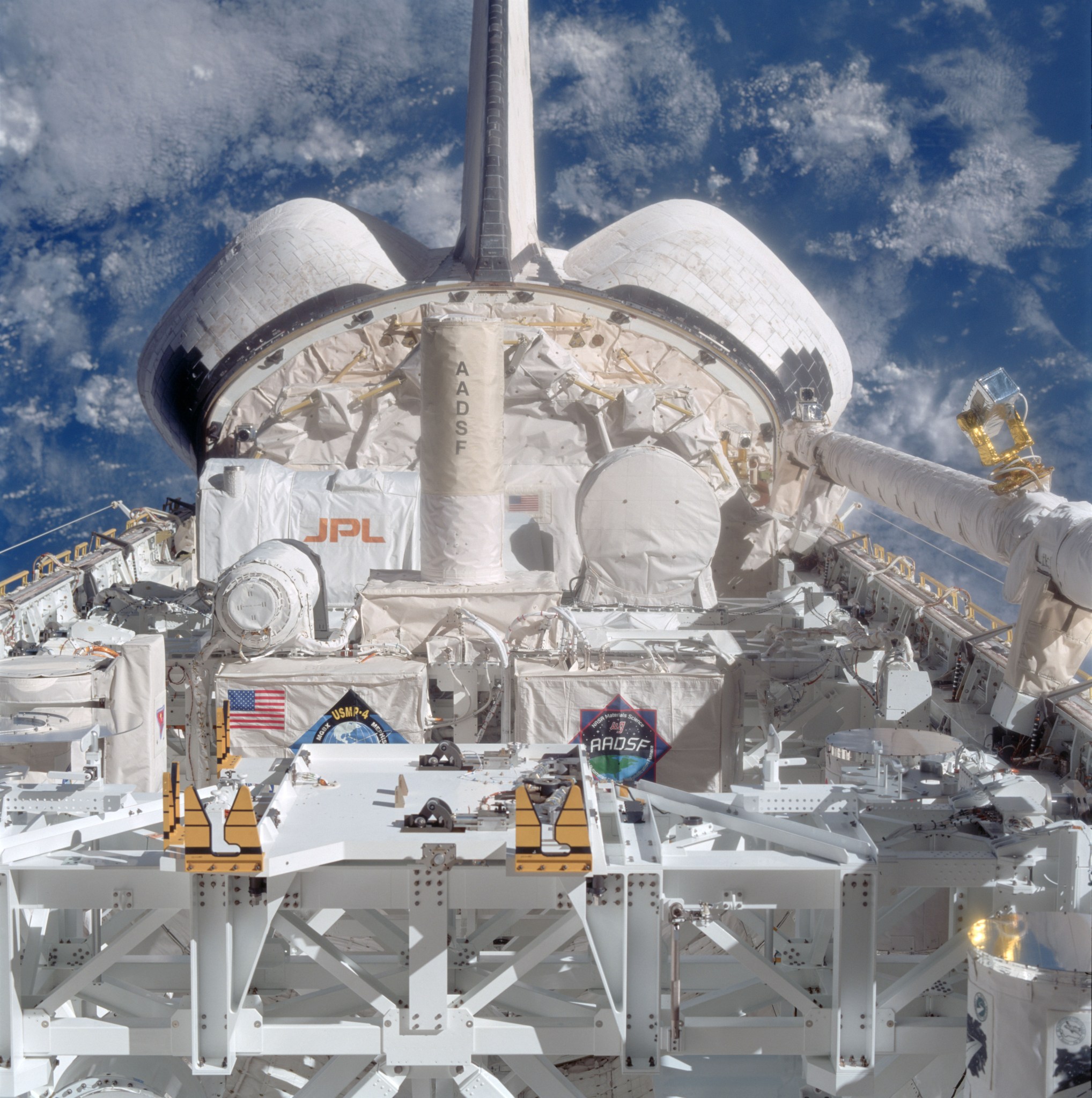
This week in 1997, STS-87 launched aboard the space shuttle Columbia from NASA’s Kennedy Space Center. The primary payload of the flight was the U.S. Microgravity Payload-4, USMP-4, which focused in materials science, combustion science and fundamentals of physics. Here, the USMP-4 module is visible in the orbiter’s cargo bay. The USMP-4 was a Spacelab project managed by NASA’s Marshall Space Flight Center. Today, the Payload Operations Integration Center at Marshall serves as “science central” for the space station, working 24/7, 365 days a year in support of the orbiting laboratory’s scientific experiments. The NASA History Program is responsible for generating, disseminating and preserving NASA’s remarkable history and providing a comprehensive understanding of the institutional, cultural, social, political, economic, technological and scientific aspects of NASA’s activities in aeronautics and space. For more pictures like this one and to connect to NASA’s history, visit the Marshall History Program’s webpage.
Obituaries
Lott W. Brantley, Jr., 81, of Huntsville, died Nov. 18. He retired from the Marshall Center in 2007 as chief of advanced concepts and developments.
Hans Nein, 86, of Alpharetta, Georgia, died Oct. 11. He retired from the Marshall Center in 1997 as an aerospace engineer.



























